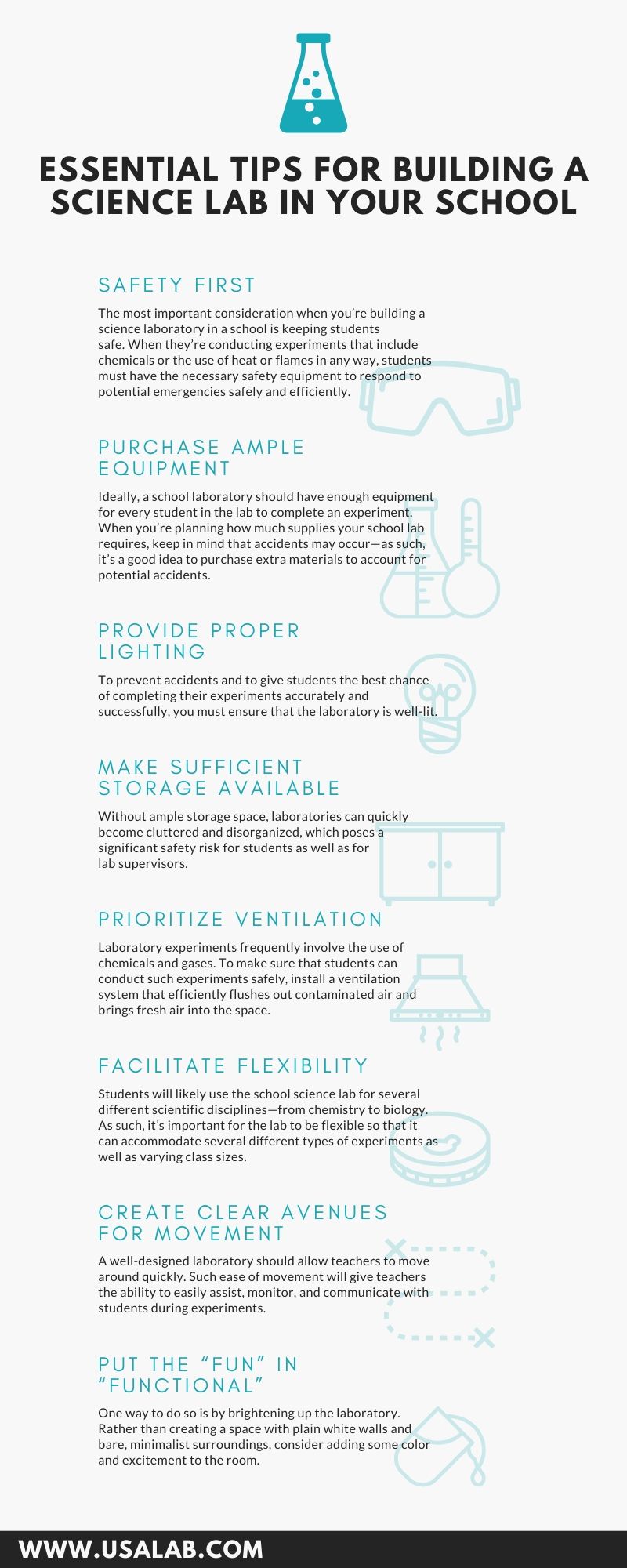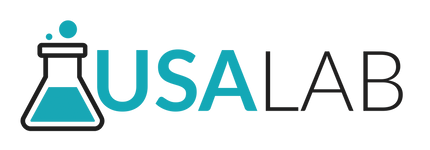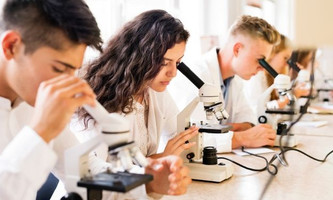How to Set Up a Science Lab in School
Jun 16th 2020
Science laboratories play important roles in schools and universities and in the education of young adults. They provide some of the few opportunities students get to engage in hands-on learning rather than soaking up information from their textbooks. To ensure that this precious learning opportunity doesn’t go to waste, it’s important to carefully design the lab so that it serves as an effective environment in which students can explore science safely. Here are some essential tips for how to set up a science lab in school.
Safety first
The most important consideration when you’re building a science laboratory in a school is keeping students safe. When they’re conducting experiments that include chemicals or the use of heat or flames in any way, students must have the necessary safety equipment to respond to potential emergencies safely and efficiently. Examples of safety features with which all school laboratories should be equipped include eye wash stations, safety showers, fire extinguishers, first aid kits, chemical fume hoods, fire blankets, and any other necessary equipment pertaining to the experiments you seek to conduct in the space.
These safety features should be located in an easily accessible area of the laboratory—preferably closer to the professor’s desk—so that supervisors can promptly engage them if necessary. After you install the necessary safety features, ensure that all teachers and lab supervisors are trained on how to operate them properly in the case of an emergency.
Purchase ample equipment
In addition to safety features, it goes without saying that an ample amount of equipment is essential to enhance the learning experience of your students. Ideally, a school laboratory should have enough equipment for every student in the lab to complete an experiment. When you’re planning how much supplies your school lab requires, keep in mind that accidents may occur—as such, it’s a good idea to purchase extra materials to account for potential accidents. For high-quality new or used lab equipment at a competitive price, check out the extensive stock at USA Lab Equipment.
Provide proper lighting
Conducting experiments and working with chemicals in an area with poor lighting is never a good idea. To prevent accidents and to give students the best chance of completing their experiments accurately and successfully, you must ensure that the laboratory is well-lit. In addition to artificial light, the laboratory should also ideally have sufficient natural lighting. As such, try to choose a location in your school with several windows for natural light to filter through. In addition to improving visibility, natural light may also allow students to complete experiments that require natural light, broadening the functionality of the lab.
Make sufficient storage available
Storage is one of the most crucial aspects of a laboratory, yet it often goes overlooked. A significant amount of storage space is necessary to contain the large amount of equipment and supplies that laboratories must house. Without ample storage space, laboratories can quickly become cluttered and disorganized, which poses a significant safety risk for students as well as for lab supervisors. Furthermore, limited storage space may also make equipment harder to access or result in damaged equipment, which will cost the school time and money. To reduce such negative effects, make sure to carefully plan out and consider the storage system of the school laboratory.
Prioritize ventilation
When you’re building a science laboratory, it’s essential to prioritize ventilation so that the students have clean air to breathe. Laboratory experiments frequently involve the use of chemicals and gases. To make sure that students can conduct such experiments safely, install a ventilation system that efficiently flushes out contaminated air and brings fresh air into the space.
Facilitate flexibility
Another essential tip for building a science lab in your school is to create a space that’s flexible. Students will likely use the school science lab for several different scientific disciplines—from chemistry to biology. As such, it’s important for the lab to be flexible so that it can accommodate several different types of experiments as well as varying class sizes. To create a more flexible laboratory environment, consider implementing non-fixed furniture that’s relatively lightweight so that students and professors can easily move it around as needs change.
Create clear avenues for movement
A well-designed laboratory should allow teachers to move around quickly. Such ease of movement will give teachers the ability to easily assist, monitor, and communicate with students during experiments. In addition, an easily navigable laboratory will also ensure that teachers can help students quickly in the case of an emergency. To optimize movement in a laboratory, make sure to create clear, navigable pathways and to reduce clutter or obstructions as much as possible—especially around exits and safety systems, which must be reached quickly in the case of an emergency.
Put the “fun” in “functional”
School laboratories shouldn’t just be functional—they should also be fun. We assume that you would like to create an enjoyable learning environment for your students in order to increase their interest in the sciences. One way to do so is by brightening up the laboratory. Rather than creating a space with plain white walls and bare, minimalist surroundings, consider adding some color and excitement to the room. For example, you could try painting the walls a bright color such as lime green or aqua blue and adding some interesting imagery to the walls. Such efforts may not seem all that important, but a little fun can go a long way when it comes to engaging young minds in the world of science.
Hopefully, these essential tips for building a science lab in your school will help you create a positive hands-on learning environment that allows students to foster a greater understanding of science and of the way the world works. If you’re looking for a place to purchase lab equipment at a great price, USA Lab Equipment can help. We supply a wide range of new and used lab equipment, such as glassware, lab chillers and heaters, hot plates, scales and balances, stands, and clamps. For more information regarding our high-quality, competitively priced laboratory equipment, contact us today.


